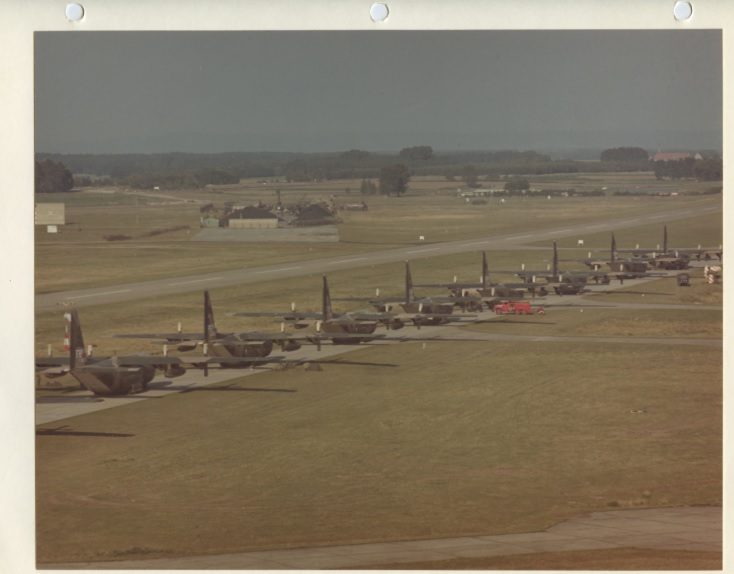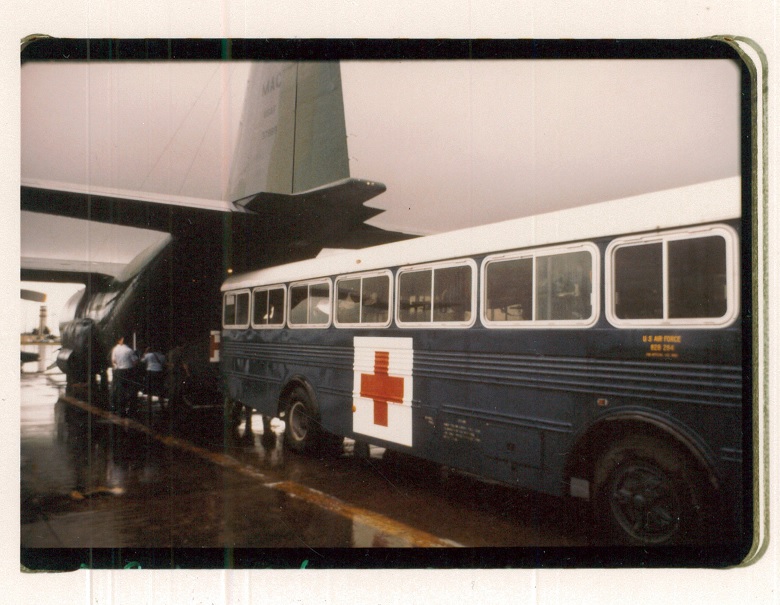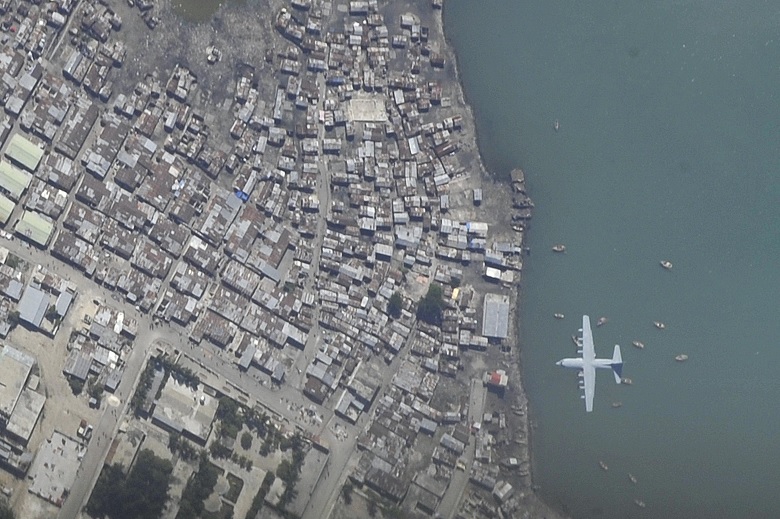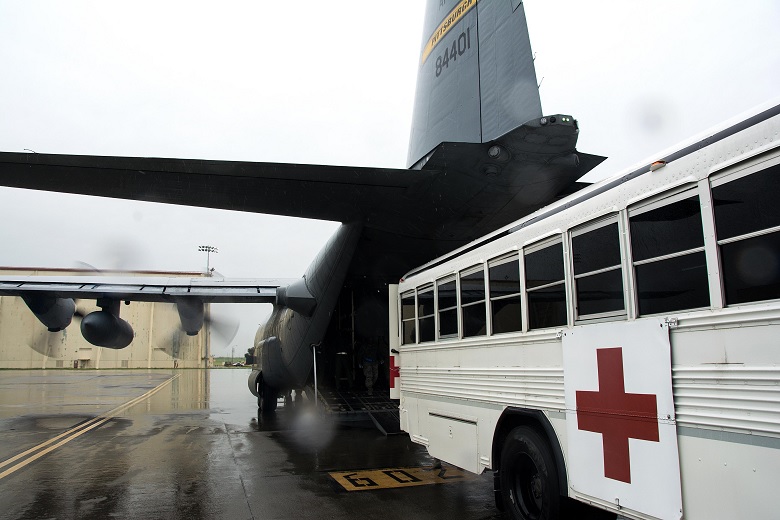The C-130 can immediately abandon its current mission and function as an aeromedical evacuation platform, thanks to its architecture
The C-130 Hercules has been a workhorse of aeromedical evacuation since the Vietnam War and continues to be a reliable platform to transport patients over long distances, enabling Airmen to deliver vital care in the air, support disaster relief efforts, and return warfighters to their families.
The C-130 is a versatile aircraft that was first put into service in 1956 and is ideal for aeromedical evacuation duty. It is regarded as reliable and tough enough for lengthy operations in the theater and can take off from difficult runways.

A photograph from the past shows the YC-130 Hercules on its first flight, which took place on August 23, 1954, from Burbank to Edwards Air Force Base in California. The Air Force’s Tactical Air Command recognized a need for a medium-cargo tactical transport in 1951 and developed the C-130 to meet that need. The C-130 has had the longest continuous military aircraft production line in history because it is still being produced today. The C-130 and its variants have served as a vital aeromedical evacuation platform for the U.S. Air Force for much of its operational history, transporting patients over large distances safely and enabling AE crews to provide care in the air. (Image courtesy of the U.S. Air Force)
This assists in bringing medical expertise closer to the front lines. In the article, Steady and Ready: C-130 mainstay of medevac, Air Force Surgeon General Public Affairs Shireen Bedi explains that the C-130’s design allows it to rapidly abandon its current mission and function as an aeromedical evacuation platform.

At Kitzingen Air Base in Germany in September 1970, Red Cross supplies, equipment, and portable hospitals were stockpiled into C-130 Hercules airplanes. As part of Operation Fig Hill, which offers emergency relief and medical assistance amid civil unrest, the aircraft was traveling to Jordan. For a wide range of aeromedical evacuation operations, C-130 aircraft have always been able to fly over hostile and occasionally hostile airfields.
It is equipped with electrical and oxygen systems for aeromedical evacuation equipment, it can be modified to carry up to 74 litter patients and is specifically made to lessen the adverse effects of altitude on patients and medical staff.

On October 23, 1984, at Clark Air Base in the Philippines, a hospital bus parks behind a C-130 Hercules aircraft to take victims of the Pines Hotel fire to the local hospital. At a reunion honoring the 40th anniversary of the liberation of the Philippines, more than 200 World War II veterans and their families were lodging at a hotel in Baguio. Since the Vietnam War, the C-130 airframe has developed a reputation as a dependable aircraft with enhanced patient transport capabilities, becoming a cornerstone of the current AE system.
The C-130 platform has been a cornerstone of the modern aeromedical evacuation system, as the pictures in this post demonstrate. It is being deployed as a tactical, intra-theater aeromedical evacuation platform.

In Port-au-Prince, Haiti, on January 16, 2010, a C-130 Hercules aircraft makes a final approach into Toussaint Louverture International Airport as part of the relief effort that sent critical medical personnel and supplies after the region was struck by a 7.0 earthquake. The C-130 is the Air Force’s most modified aircraft, allowing it to fulfill a range of mission requirements, according to the Air Mobility Command Historian Office. The C-130 is a crucial airframe for disaster response because of its adaptability; when necessary, it can be quickly changed in the field from cargo transport to aeromedical evacuations. (U.S. Air Force photo by Airman 1st Class Perry Aston)

At Bagram Airfield in Afghanistan on May 29, 2014, U.S. Air Force airmen with the 455th Expeditionary Aeromedical Evacuation Squadron got ready to unload patients. In all of Afghanistan, the aeromedical evacuation squadron transports and cares for injured and ill personnel. Aeromedical evacuation personnel must set up their work area, which spans nearly the full length of the aircraft’s cargo section, in an organized manner because space is at a premium on a C-130. (U.S. Air Force photo by Staff Sgt. Evelyn Chavez)

On a C-130 Hercules during an emergency flight from Kandahar Airfield, Afghanistan, on February 14, 2010, U.S. Air Force Maj. Debora Lehker, a reserve critical care air transport team nurse, consoles a wounded Canadian army soldier. Members of the Aeromedical Evacuation Team are regarded as flight crew, therefore, in addition to their area of medical expertise, they also need to be knowledgeable about the C-130 aircraft. They must understand how to set up the aircraft to accommodate patient litters and how the electrical systems for the equipment are needed to keep passengers safe while in flight operations. (Courtesy photo)

On March 24, 2017, a C-130 Hercules from Pittsburgh Air Reserve Station, Pennsylvania, backs up to an ambulance bus from the 60th Inpatient Squadron at Travis Air Force Base, California, during Patriot Delta. The 60th IPTS provided en route patient care and set up the medical manikins as part of the Air Force Reserve exercise Patriot Delta. Through training opportunities like this one, AE crews may learn how to safely and effectively move patients to the back of the plane, provide care while in the air, and guarantee that patients are delivered to the next level of care. (U.S. Air Force photo by Staff Sgt. Daniel Phelps)

